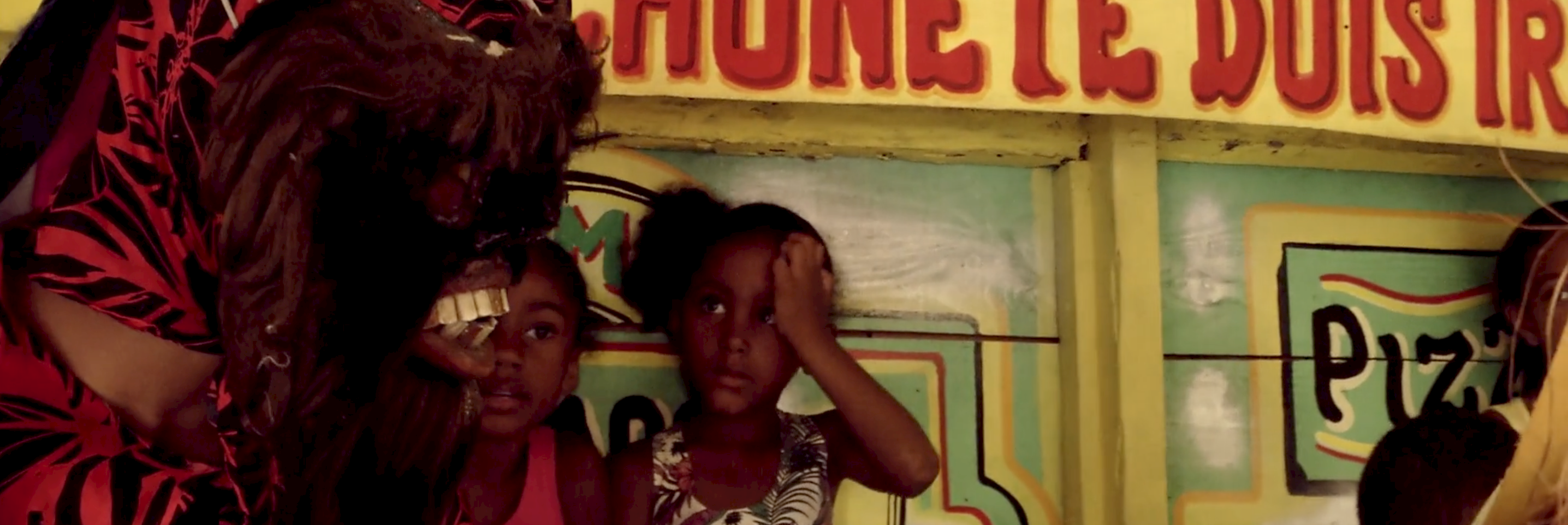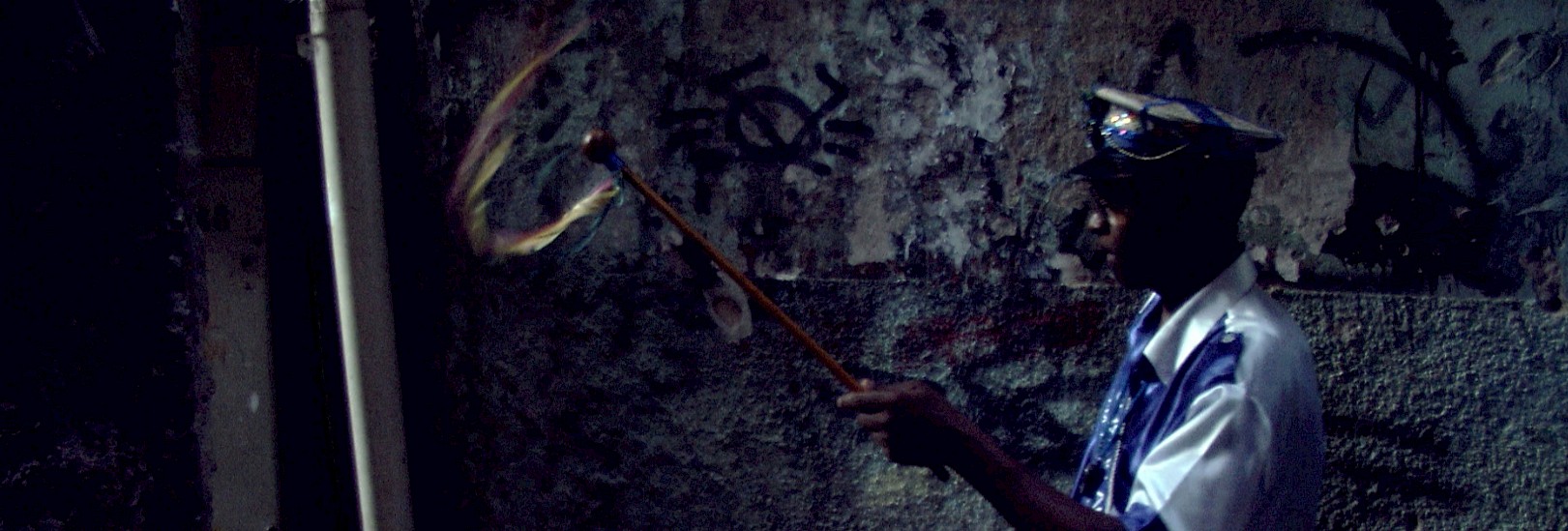Folia de Reis Santa Marta
16:17
Folia de Reis Penitentes de Santa Marta (Three Kings’ Day Festivities). Master Riquinho. Master Clown Ronaldo. Favela Santa Marta. Rio de Janeiro. December 25th
Folia de Reis Santa Marta
Myrrh, frankincense and gold: these were the presents the Three Magic Kings from the East brought to baby Jesus Christ when they met him in his manger. They traced their route by following a star that lit the skies. What once was history became revelry in Portugal, only to arrive in Brazil as a celebration of faith.

"This is a joyful day for me
I play at your house
With all my revelries”
Master Clown Ronaldo
The first Folia de Reis festivities took place in the 18th century in Brazil, and these Reisados still parade around towns in the states of Minas Gerais, Bahia, Goiás, Espírito Santo, Paraná, and Rio de Janeiro. Revelers parade in groups and dress in the color of the saint of their devotion. With their violas and musical instruments, they form an actual orchestra with flutes, clarinets, drums, and anything else they can find in their homes or along the way. Together they repeat litanies from door to door around the neighborhood.
Usually, these parades start in late December and end in early January. In Rio de Janeiro, the celebrations take a bit longer, stretching until 20th January, Saint Sebastian’s day, the city’s patron saint. The singing in worship of the Saints and baby Jesus is a poetic argument for interaction: a permission to enter the homes of people they know, to take a peek into their lives, their families. It’s when sacred and profane meet with this mass of people, standing by their doors: clowns and kings and saints on any given porch.

And the Penitentes de Santa Marta parades display a characteristic that can only be seen in such places with spontaneous geographies: vertical processions. Up-and-down the hills of one of the most notorious favelas in the “Marvelous City” known as Rio. One of many informal and high-density population urban settlements in Brazil, Favela Santa Marta is an agglomeration situated on a hill named after the same saint: a place where a devotee brought an image of Santa Marta that, according to the community’s believers, sees all and shines on all that is there.
The Penitentes procession started in Ilha do Governador neighborhood, and hiked up the hill when its local master, Zé Cândido, passed away. In Santa Marta, it has resisted for over seventy years under the leadership of Master Zé Diniz, and is now under the care of his son, Master Riquinho.
"I can’t let this revelry’s name fade”
Master Riquinho Folia

As often happens in Brazil, resistance and poetry are lessons learned at home, family lessons. One carries the flag and leads the singing, while the other is weightlessness and spontaneity, door-to-door. Because Saint festivities are serious business and Kings’ processions are to be handled carefully, there’s enough rigidity in daily life: nothing is more sacred than good play.
